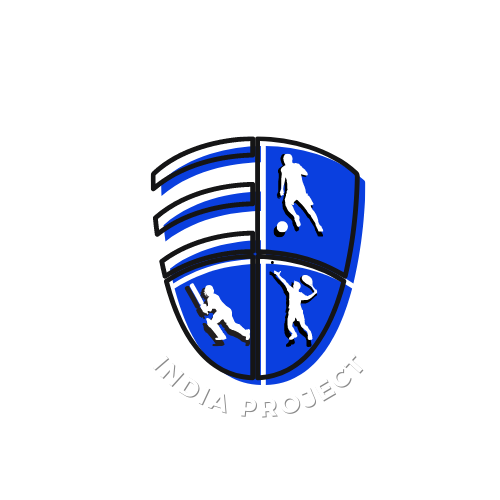High performance training
Swift and powerful movements and exceptional fitness are the usual characteristics of competitive athletes. But how do they achieve high levels of fitness? It could be exceptional genetics or the athletes’ daily interactions with expert trainers. Rather, it is the sum of a person’s genetics, training, nutrition, and care.
CrossFit has been gaining traction in recent years, with more people investing in this unique format of fitness training. However, high-performance training is extremely effective and an enjoyable variation from the mundane gym routine. The ways that competitive athletes train can teach us a lot. The so-called high-performance training, which includes exercises that are occasionally easy and other times difficult, is successful. Let’s discuss some of the training techniques to optimize your athletic performance.
Adaptive resistances
Basic movement sequences with adaptive resistances – competitive athletes and their coaches understand that certain exercises or movement sequences must be performed explosively. Exercises with a slightly lighter weight tend to be more explosive and are performed quickly.
Tremendous acceleration conditions the muscle fibres and nerve tracts to perform the movement explosively. This not only makes the athlete faster, but it also makes him or her stronger. External resistance is increased with the help of aids such as chains and ribbons. These resistances, when used correctly, can greatly improve the ability to accelerate when moving loads.
Sprints & HIIT
In almost all common sports, maximum performance is only really required in short, interval-like intervals. For the sake of clarity, think of the football player who, in the crucial situation, leaves his opponent and marches to the goal. Or the boxer who sees the gap and explodes with full force and speed. No athlete in the world can maintain these ‘sprints’ for long periods of time.
The appropriate rest or recovery phases are required to be able to call up the full performance again and again in critical situations. The typical exercise time is 3-8 seconds, followed by a 35-45 second break. Athletes should train in at least the same load intervals that are anchored in their sport for optimal preparation for these high-performance intervals.
High-intensity interval training (HIIT) is perfectly suited for this and can be most easily incorporated with traditional sprints.
The plyometric training
Plyometric, like many other terms, is derived from Greek and refers to a type of speed-strength training. Strength is a decisive factor in improving overall performance in all possible disciplines while bodybuilding is secondary.
As a result, it is particularly appealing for sports that require short-term strength development. In addition to martial arts, there are various ball sports and athletic disciplines. Top athletes use the method to optimize their strength training and to achieve more power.
Several studies have shown that plyometric training is beneficial as its principle is based on increased muscle pretension, which allows higher forces to be summoned more quickly, especially in the short term. With the right exercises, you can train all the possible muscle groups.
Push-Pull-Carry
During the off-season, many athletes want or need to gain weight and strength. Experienced athletes typically do this by lifting, pushing, pulling, or carrying heavy weights. Moving the heavy load puts the entire musculoskeletal system and central nervous system to the ultimate test.
To survive, the entire organism attempts to adapt to the load, resulting in the athlete becoming enormously stronger. This method is used to develop bigger, faster, and stronger players in sports like wrestling, football, and rugby. For example, a good training session would be a lunge with relatively heavy kettlebells.
Medicine balls
Medicine balls are probably familiar to you from your school days. In fact, your sports teacher was not entirely wrong at the time, because training with the rather unwieldy, large balls is especially effective. Using the entire musculature in a ‘medicine ball slam,’ for example, will train your general fitness and athleticism without boredom.
Simultaneously, slamming the ball on the floor or against a wall is an excellent stress reliever. Boxers, wrestlers, and track and field athletes particularly use the medicine ball on a regular basis to build strength, endurance, and speed.
Targeted training analysis
Have you been training for a while but have a sneaking suspicion that your efforts aren’t yielding the desired results? Wither you could be training incorrectly, or the units do not perfectly match your performance level or other personal criteria.
The way individual footballers in a team used to complete their daily workload together a few years ago has now changed dramatically. To be able to work specifically on the weak areas, each individual athlete is given a meticulously coordinated program. Extensive analysis and continuous monitoring of physical parameters and performance indicators are not only the foundation for professionals. The goal is not only to create completely personalized training units, but also to be able to respond directly to performance improvements or deteriorations and take countermeasures.
A wide range of precise body and fitness trackers are now being used in everyday training outside of professional sports. They can be used to gather vital data and information about an individual’s fitness level. You can record various body data during training, such as heart rate during exercise, in addition to the duration of the training, kilometres covered, or calories burned.
The majority of analysis equipment can be linked to an app. These already provide extra tools for data evaluation. In particular, the visual processing and transmission of data in the form of graphs or simple statistics can already provide additional information about an individual’s training program or achievements.
Conclusion
Knowledge is paramount. The more you learn about new workout methods, proper sports nutrition, and your own performance growth, the more efficient your training will be. While most professional athletes are cared after and supported by an army of experts, the onus of taking the initiative and discovering the methods that work for you to achieve your goals lies with you.


